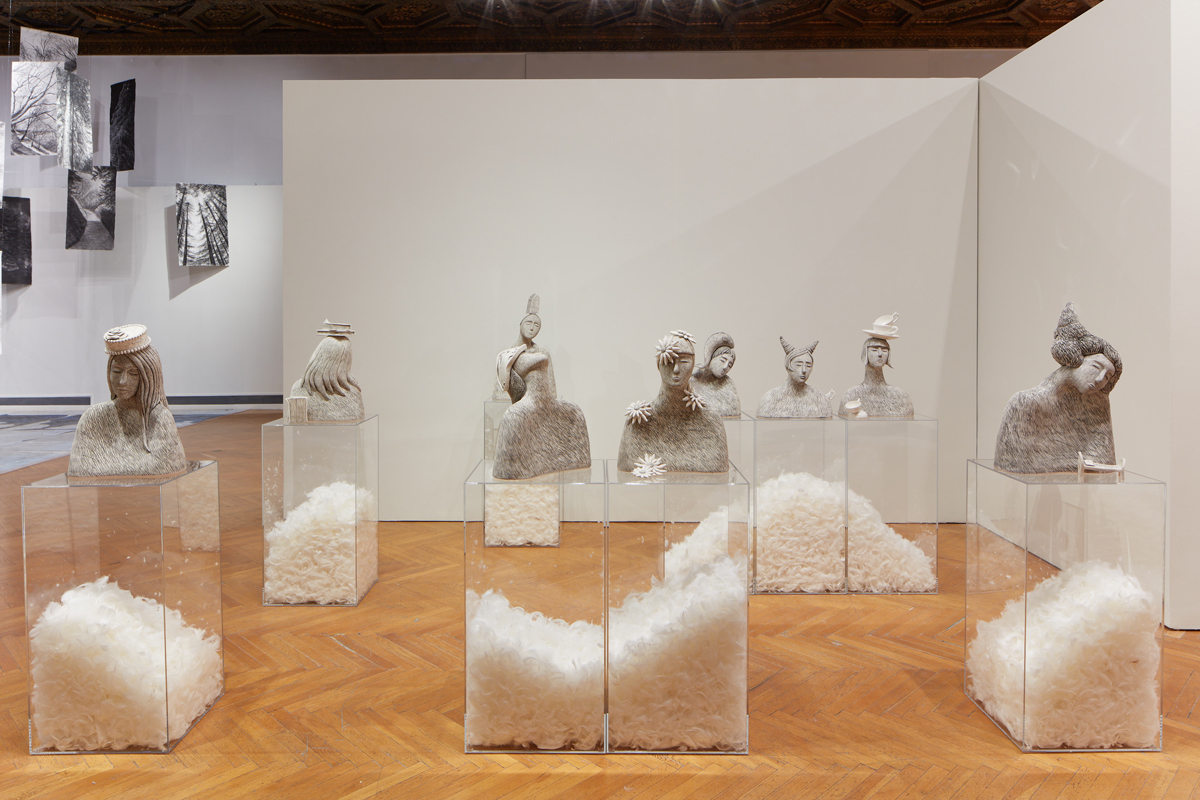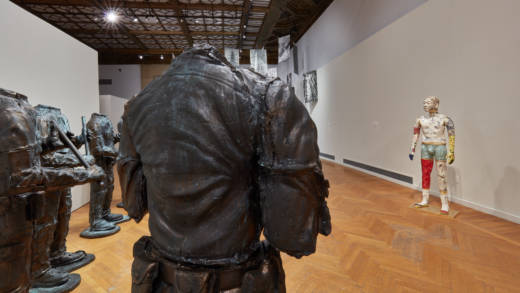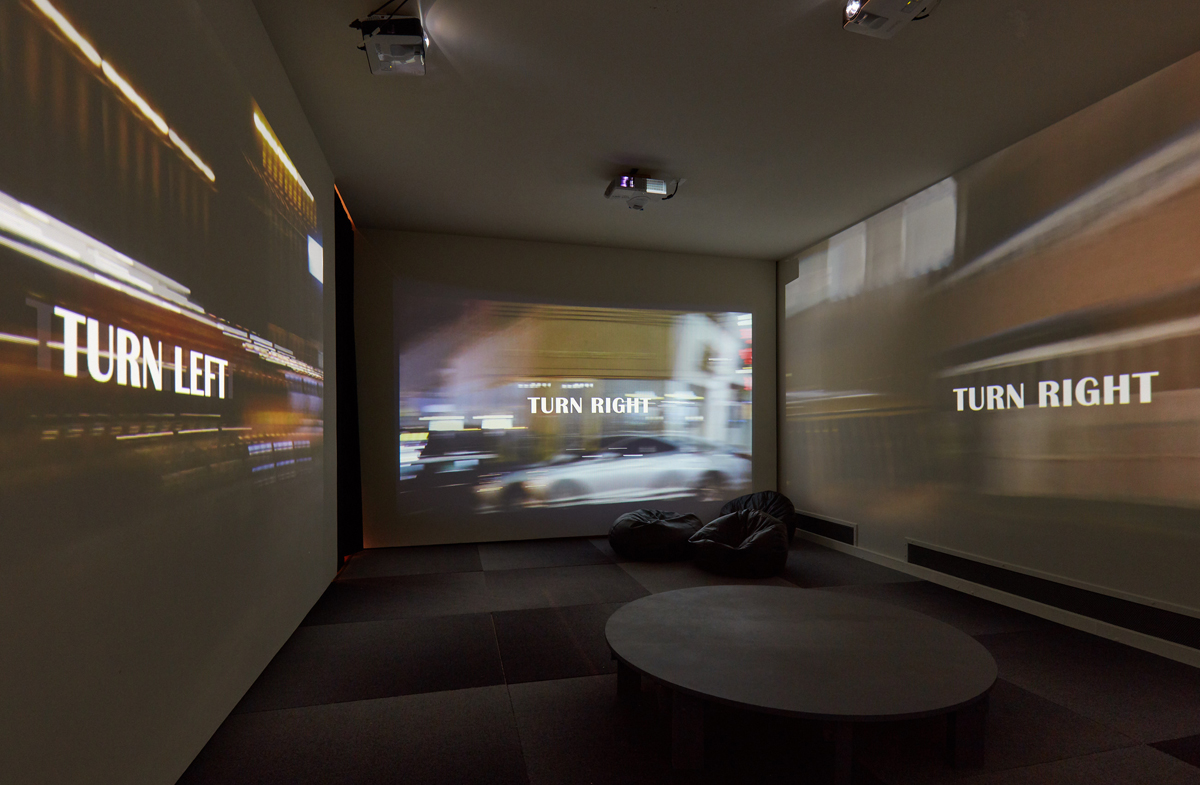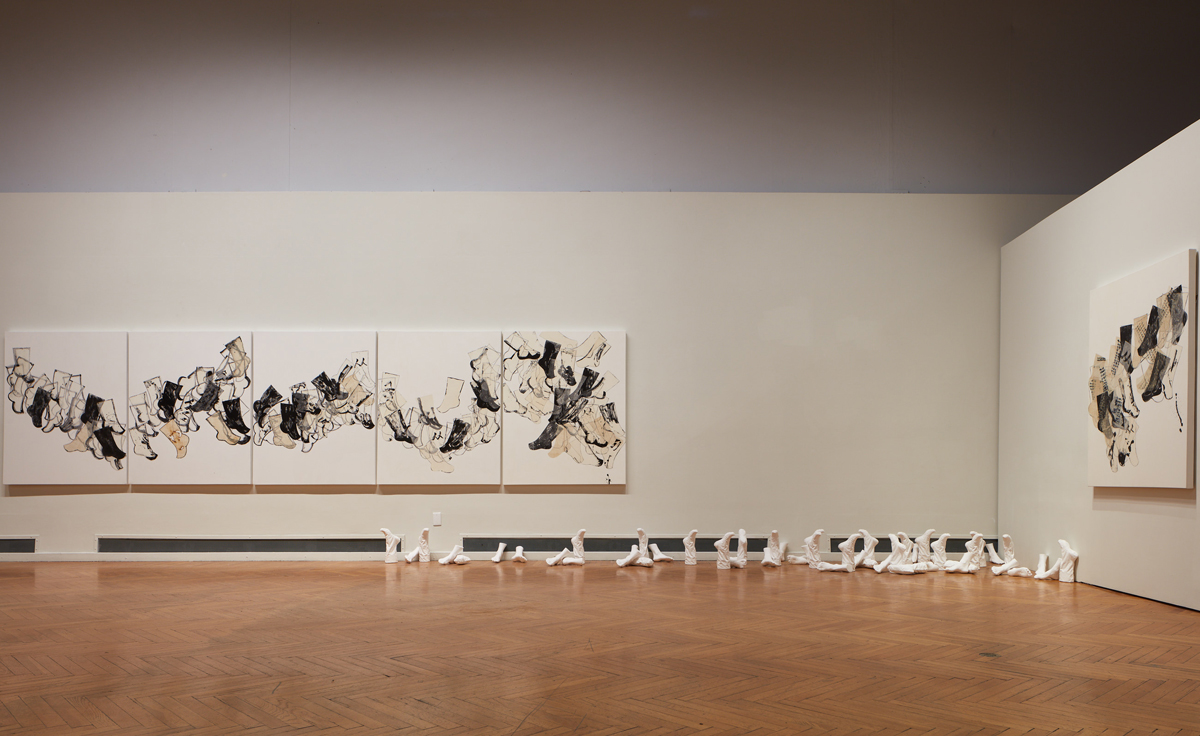Chinksugi is a life-size figure made of ceramic, wood, resin, and paint — the title is a play on kintsugi, the Japanese practice of fixing broken pottery. This technique uses lacquer mixed with gold or silver dust to highlight cracks and embrace the flaws of the piece rather than conceal them. From head to toe, Chinksugi boasts stereotypical Asian motifs: a Japanese cherry blossom on one of the ankles, a china plate design across the chest.
“This work,” says artist Nicholas Oh, “is about how Asian Americans are perceived and generally assumed to be foreigners. My work aims to fight some of these generalizations by embracing stereotypes.”
The work Oh refers to was specifically made for In-Between Places: Korean-American Artists in The Bay Area, an exhibition organized by Mills College Art Museum and independently curated by Linda Inson Choy, a contemporary Korean art specialist, with consultation from Hyonjeong Kim Han, associate curator of Korean art at San Francisco’s Asian Art Museum.

“There are times when someone looks at me and makes a preconceived judgement that I am a foreigner from Asia,” Oh says. “However, in reality, I actually identify with American culture more than my ancestral Korean culture, putting me somewhere in between.”
The Bay Area has long been a hub for Korean culture, but the reality of being a Korean-American person means reconciling with the nuances of an ambiguous identity. In-Between Places — the first exhibition to decidedly acknowledge that Korean-American art is Korean art — showcases a wide variety of media (sculpture, painting, ceramics, video, textiles, performance and installation art) from Bay Area Korean-Americans responding to and reflecting on the multiplicity of their identities.





